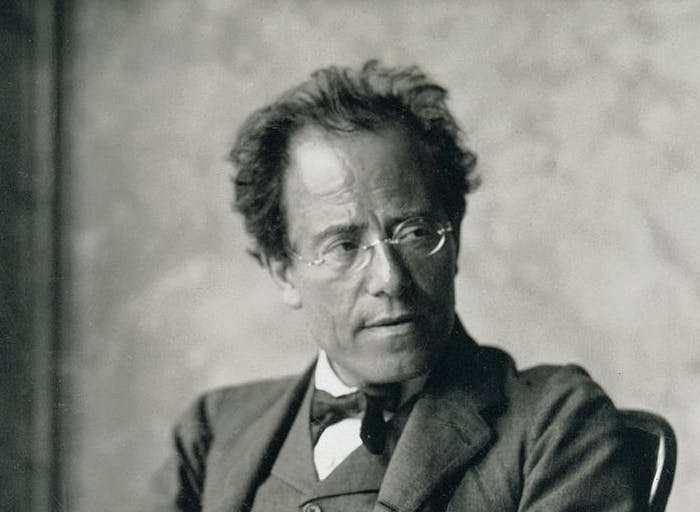‘A Mosaic, Not a Blend’: A New Portrait of Mahler’s Marriage
Music critic Joseph Horowitz’s first novel is an alchemical quest — to bring memories and accounts from dusty archives to life, and he largely succeeds.

‘The Marriage: The Mahlers in New York’
By Joseph Horowitz
Blackwater Press, 225 pages
Like much of Joseph Horowitz’s work, his new novel, “The Marriage: The Mahlers in New York,” is a refutation of previous histories. The book, which centers on the three years the Austrian composer and his wife spent at New York, offers an iconoclastic perspective on why Mahler never quite clicked with the music establishment here.
Mahler was less a genius facing an ignorant public and more a man largely uninterested in the New World he had entered, Mr. Horowitz contended in a conversation at his Upper West Side apartment.
That view contrasts with standard accounts, like the one by Henry-Louis de La Grange, who wrote a four-volume biography of Gustav Mahler — “and each volume is over a thousand pages long,” Mr. Horowitz quipped — that suggests Mahler was misunderstood by New Yorkers. “He always sides with Mahler,” Mr. Horowitz says of the biographer. “His whole life was identifying with Mahler.”
“The musical press in New York was actually very sophisticated, and they were by no means a wall of opposition. People more or less liked his Fourth Symphony, for instance. It wasn’t denounced for being Jewish, as it was elsewhere. I actually am the first person to write about Mahler in New York who really knows something about the musical scene that he encountered.”
This claim is not without merit: A self-described maverick, Mr. Horowitz has spent the better part of his career immersing himself in the late 19th and early 20th century world of New York classical music, as both a writer and concert producer. He also produces the documentary series “More Than Music” for NPR’s “1A.”
“All my activity is based on my own feelings of betrayal and disappointment when I realized how marginal and dormant classical music in the United States had become,” he explained.
In his 1987 book “Understanding Toscanini,” Mr. Horowitz set out to find out why, ruffling a lot of feathers along the way. “The Marriage,” his first novel, offers the reader a guiding hand through a dizzying array of research and scholarship.
The author’s prose, which frequently changes voice and incorporates historic letters and concert reviews, sometimes fictionalized, is a heady brew that at its best succeeds in making the reader empathize with the often self-absorbed Mahler and particularly his wife, Alma, a talented composer in her own right.
“I knew I could do Mahler’s voice. … The big challenge in this book was Alma,” the author said. We want to know who these people are, and, in Mr. Horowitz’s hands, we get the feeling that we do.
When Mahler discovers his wife has been having an affair with a Bauhaus-founding architect, Walter Gropius, he seeks counsel from another luminary, Sigmund Freud, who encourages the composer to stop prohibiting his wife from creating.
“He realized that he had to do something to win her back and that he couldn’t just be an autonomous genius,” Mr. Horowitz said. Later in the novel, when Mahler’s health is failing, Mr. Horowitz illuminates the complexity of their relationship, writing in Alma’s voice, “It is not so easy to draw sustenance from greatness when the muse must also be the mother and the nurse.”
At times, the wealth of facts can bog down the narrative with details, but Mr. Horowitz’s is an alchemical quest — to bring memories and accounts from dusty archives to life, and he largely succeeds.
One of the central problems facing contemporary orchestras is how to appeal to a generation raised on 15-second videos. A “dumbing down” of programming is not what Mr. Horowitz sees as the solution.
“Orchestras have moved in a different direction than museums,” he says. “The thing that most dismays me is that museums are so far ahead of orchestras. They have scholars on staff, they embrace scholarship, they curate the past, which means they have a knowledgeable understanding of previous achievement, and in particular, American achievement. No orchestra even aspires to do that. They took the wrong track. It’s the entertainment track.”
Amid this weekend’s sold-out performances of Mahler’s Ninth Symphony led by the New York Philharmonic’s future music director, Gustavo Dudamel — who inspired the character Rodrigo on the Amazon series “Mozart in the Jungle” — I asked Mr. Horowitz if he thought the problem of the “celebrity conductor” that he outlined in “Understanding Toscanini” persisted to this day.
He offered diplomacy, while adding, “The fact that a conductor, rather than a composer, should be the iconic musician, is, I think, a problem that begins with Toscanini and exists to this day.”
Mahler’s professional life was primarily that of a conductor, not a composer, which is what brought him to New York, initially to conduct at the Met. When recreating in the novel a later rehearsal with the New York Philharmonic of Mahler’s own Second Symphony, Mr. Horowitz’s rich use of detail compellingly evokes the feeling of the music but also the artist’s own unease in his new home: “a hushed and distant trumpet song, a tender Iglau lullaby over cascading harps. Memories — despoiled by these renegade Americans in a city of cement.”
This is in contrast to the vivid description of the triumphant debut performance in Munich of Mahler’s Eighth Symphony, the “Symphony of a Thousand,” which temporarily re-energized the composer. The music created “a surging organism, a sentient community bound by a single primal impulse of apocalyptic sound and feeling.”
While rehearsing the orchestra, Mahler instructs the players that the work is “a mosaic, not a blend. Shifting grains of color, always individual grains” — an astute description of Mahler’s music as well as “The Marriage” itself, with its myriad distinct strains coalescing into a convincing whole.

